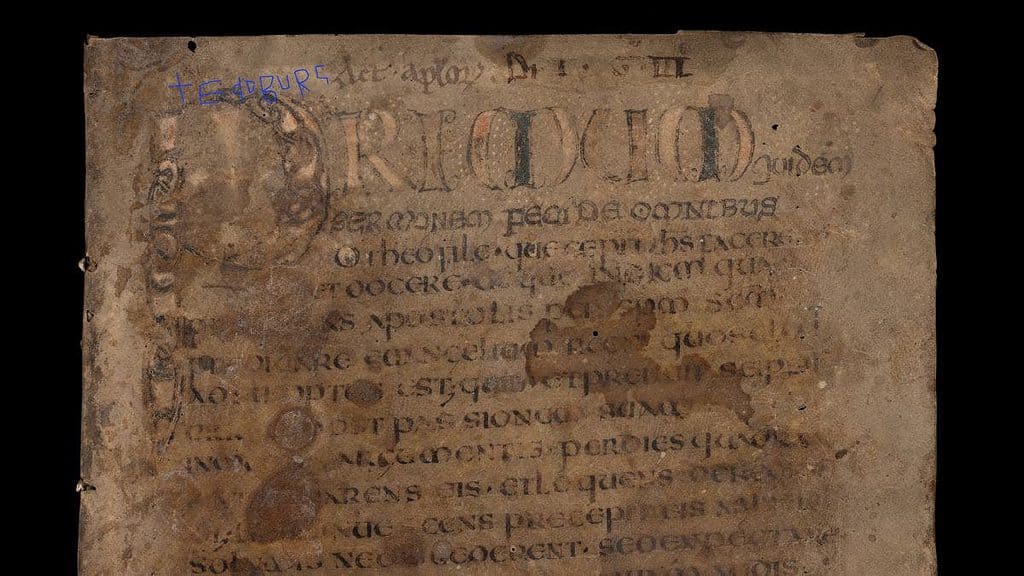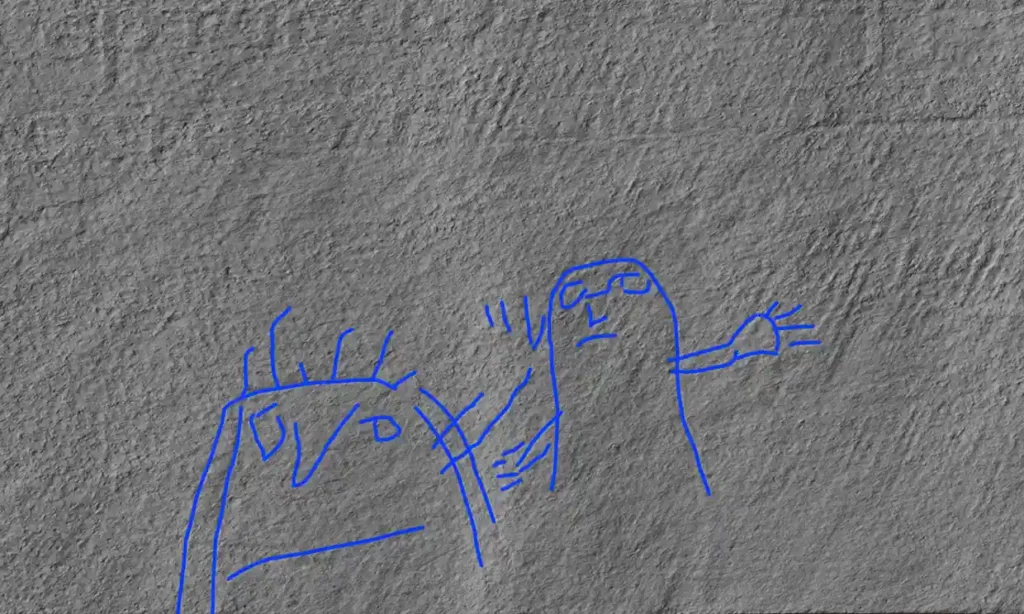Researchers inspecting a 1,200 manuscript in Oxford’s Bodleian Library have discovered scribbles in the tome’s margin that they believe link the text to a woman named Eadburg. A technique called photometric stereo brought the scribbles out from obscurity, allowing the team to better see and interpret the lettering and doodles.

The manuscript is called MS. Selden Supra 30, a copy of the Acts of the Apostles — the fifth book of the New Testament. It’s a small biblical manuscript, about nine inches tall and six inches wide. The lettering and doodles were done in drypoint, which was practically invisible to the naked eye – until now when the new technique was applied.
Researchers believe the markings are the work of a high-status and highly-educated woman because the markings were made at a time when only the elite could read and write. Noblewomen and nuns, in particular, were often literate in medieval times and had access to books and manuscripts.
The Old English female name Eadburg is repeated in the markings, which researchers interpret as the woman’s name.
“We have currently identified five instances of Eadburg’s name written in full on five different pages of the manuscript,” Jessica Hodgkinson, a doctoral student of history at the University of Leicester who made the discovery, told Live Science. “Other abbreviated forms of the name have been found in the margins of these and other pages.”
An unexpected finding
Hodgkinson came across the name Eadburg while studying the manuscript in the Bodleian Library. The manuscript was then studied with imaging technology developed by the Bodleian’s Analysing and Recording Cultural Heritage in Oxford (ARCHiOx) project with the Factum Foundation, an NGO that seeks to preserve old artworks using digital technology.

The method, called photometric stereo recording, allows the examination of the manuscript under different lighting conditions to construct a 3D model of its surface. It can then reveal markings as shallow as one-fifth of the width of a human hair. It’s the first time such a method has been used to scan the annotations of a manuscript, the researchers said.
While it’s not possible to definitively determine whether Eadburg herself made the secret writings, Hodgkinson believes this is the most likely scenario. A page near the back of the manuscript also has a handwritten prayer written from the perspective of a woman, which suggests that the book was used by a woman or a group of women, she said.
Nine women named Eadburg are recorded to have lived in the UK between the 7th and 10th centuries, the researchers said. One of those was an abbess in Kent. Considering her access to manuscripts, she may be the same who made the doddles. This lines up with the book’s historical location, as the style of the script indicates it was written in Kent.
Whichever Eadburg made these scribbles, it’s impressive they can still be read centuries after. The researchers will continue to study the inscriptions further, hoping to understand the significance of where they are placed in the manuscript and how they related to the main text. This could provide further information on their meaning and about who wrote them.









